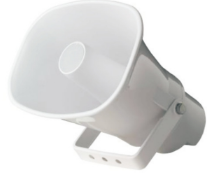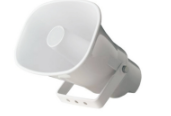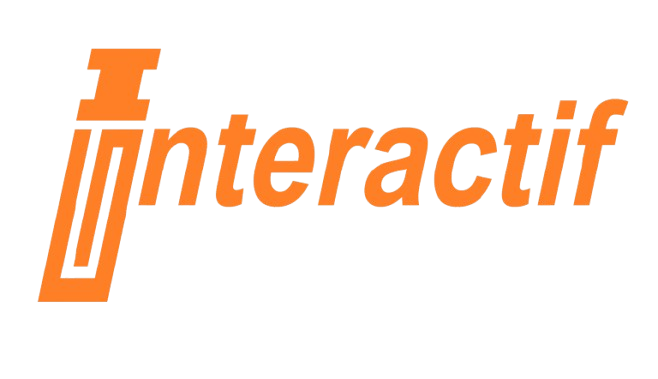PUBLIC ADDRESS SYSTEM

L-PHP15A Horn Loudspeaker
PRODUCT DESCRIPTION
- Low profile appearance
- Superior voice reproduction effect
- Water and dust proof, IP66 compliant
- Easy for installation
- International safety standards compliant
UL60065 and RoHS compliant


FEATURES
- Low-profile appearance
- Superior voice reproduction effect
- Water and dustproof, IP66 compliant
- Easy installation
- Compliance with international safety standards
- UL60065 and RoHS compliant
PRODUCT DESCRIPTION
L-PHP15A is a 15W horn loudspeaker known for its low-profile appearance and white cover, allowing it to seamlessly blend into various outdoor environments. Apart from its excellent voice reproduction and sound transmission capabilities, the loudspeaker is also designed to be water and dust protected, making it highly suitable for noisy and spacious outdoor settings like sports fields, parks, exhibition halls, factories, and train stations, among others.
The horn loudspeaker comes equipped with a robust adjustable mounting bracket, facilitating easy installation for operators.
specifications
TECHNICAL SPECIFICATIONS
- ELETRICAL :
- Max Power: 25 W
- Rated Power: 15 W
- Power Tapping: 15 W / 7.5 W
- Sound Pressure Level at 15 W / 1 W (1m, 350 Hz ~ 7 kHz): 114 dB / 102 dB
- Effective Frequency Response Range (-10 dB): 400 Hz ~ 6 kHz
- Dispersion Angle (1 kHz / -6 dB): 140°
- Line Input: 70V
- Rated Impedance: 327 Ω / 653 Ω
- Connection: Flexible wire
- MECHANICAL :
- Dimensions: 225 mm x 165 mm x 165 mm
- Weight: 1.38 kg (7.05 lbs)
- Color: White (RAL9010)
- ENVIRONMENTAL :
- Operating Temperature: -25°C to +55°C (-13°F to 131°F)
- Storage Temperature: -40°C to +70°C (-40°F to 158°F)
- Relative Humidity: < 95%
Request a Quote
Learn More From
Frequently Asked Questions
Multimode fiber commonly comes in 50/125 μm or 62.5/125 μm core/cladding dimensions, with bandwidth capacities ranging from 200 MHz to 2 GHz, depending on the grade. Multimode systems typically support transmission distances of up to 5 km, making them suitable for short- to medium-range applications.
In contrast, singlemode fiber—usually 9–10/125 μm—offers significantly lower attenuation and effectively unlimited bandwidth, supporting links over 150 to 200 km, especially when paired with optical amplifiers and advanced transceivers.
While singlemode fiber is less expensive per meter, its associated transceivers and equipment tend to cost more than their multimode counterparts. That said, singlemode devices are generally compatible with both singlemode and multimode fiber, whereas multimode equipment works only with multimode fiber.
Let me know if you’d like this turned into a quick-reference table or visual comparison—it’d make a solid inclusion for a fiber deployment guide.
The link budget is the difference between the transmitter’s output power and the receiver’s sensitivity. This budget must account for all signal losses along the path, including:
- Fiber attenuation due to the transmission medium
- Connector losses, such as those at patch panels or equipment interfaces
- Splice losses from mechanical or fusion joints
- Link margin, which provides a buffer for unforeseen variations
The link margin typically ranges from 2–3 dB in tightly controlled environments to up to 10 dB in more variable conditions. It is designed to accommodate:
- Component aging (e.g., light sources may degrade and lose up to 3 dB over time)
- Temperature variations affecting transmitter output or receiver sensitivity (up to 3 dB may be needed for thermal fluctuations)
- Physical cable damage and repair-induced losses (usually minor, but more relevant in harsh or industrial settings)
Always design your system for worst-case scenarios to ensure reliability. However, don’t overlook the best-case condition either—some optical receivers may exhibit erratic behavior if the incoming signal is too strong.
First, verify the optical signal strength along the link. Use an optical power meter to measure the received power at the fiber’s end point. Typical transmit levels range from –8 dBm to –15 dBm, while the receiver sensitivity is around –31 dBm, giving you a link budget of approximately 16 dB. This margin supports transmission distances of up to 10 km on singlemode fiber and about 3–5 km on multimode fiber.
If the measured power falls below the receiver sensitivity, there’s a strong likelihood of issues with the installed fiber. Ideally, initial OTDR readings should have flagged such faults.
If not, inspect the patch cords currently in use for possible defects or misalignment. A frequent oversight is the use of mismatched patch cords.
Multimode fiber types are classified by the ISO/IEC 11801 standard into five main categories: OM1, OM2, OM3, OM4, and OM5. Each type differs in core size, bandwidth, supported data rates, and maximum transmission distances. Here’s a quick breakdown:

- OM3 and OM4 are laser-optimized and widely used in modern data centers.
- OM5 supports shortwave wavelength division multiplexing (SWDM), enabling multiple wavelengths over a single fiber for higher capacity.
- All OM types are backward compatible in terms of connectors, but mixing core sizes (e.g., OM1 with OM3) can cause performance issues.
